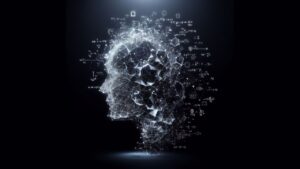Imagine a future in which your smartphone can comprehend your emotions, computers can learn just like people, and robots can act on their own initiative. The world of Natural Intelligence vs. Artificial Intelligence is a fascinating one.
With the help of this blog post, engineers will gain a new perspective on the remarkable intellect that exists all around us. We’ll also learn how machines can emulate human thought processes. Let’s examine what makes us so intelligent and how we are training machines to be just as smart.
A. Definition of Natural Intelligence
Natural intelligence, often known as human intellect, refers to a person’s innate capacity for thought, problem-solving, and adaptability. It is the outcome of sophisticated brain networks and lifelong experiences. Humans are able to learn, reason, and make judgments in a highly uncertain and dynamic environment thanks to their natural intelligence.
B. Definition of Artificial Intelligence
The field of computer science known as artificial intelligence (AI) strives to develop machines or systems that can simulate and carry out activities requiring human-like intelligence. These activities involve using data to learn, adjusting to changing circumstances, and making decisions based on that data. AI systems are able to process enormous volumes of data, discover patterns, and carry out a variety of tasks after being trained.
C. Differences between Natural and Artificial Intelligence
- Learning Mechanism:
- Natural Intelligence: Humans learn by combining their intrinsic cognitive abilities with the knowledge and experiences they accumulate throughout time.
- Artificial Intelligence: AI systems learn from data, and the majority of their learning is data-driven, relying on training models and algorithms.
- Adaptability:
- Natural Intelligence: Humans are extremely flexible and can adapt to a variety of tasks, settings, and circumstances.
- Artificial Intelligence: AI systems are trained to perform specific tasks, but the extent of their adaptability is constrained by this specialization.
- Consciousness:
- Natural Intelligence: Humans have consciousness, self-awareness, and emotions, all of which have a big influence on how they make decisions.
- Artificial Intelligence: As AI lacks awareness and feelings, it bases all of its decisions solely on facts and algorithms.
D. Advantages and Disadvantages of Natural Intelligence
- Advantages:
- Problem-solving is driven by human creativity and intuition.
- Understanding complex social and interpersonal circumstances is made possible by emotional intelligence.
- the capacity to adapt to new, chaotic situations.
- Disadvantages:
- Unable to quickly process enormous amounts of data.
- Vulnerable to mental biases and mistakes in judgment.
- Performance is impacted by human limitations and aging.
E. Advantages and Disadvantages of Artificial Intelligence
- Advantages:
- exceptional data processing skills that increase productivity in routine operations.
- Consistency and absence of tiredness when completing repetitive tasks.
- Predictive analytics and large-scale automation potential.
- Disadvantages:
- Lacks intuition and imagination.
- Prone to mistakes while dealing with unfamiliar or unexpected circumstances.
- Concerns for society and the ethics of making decisions without empathy.
The interaction of natural and artificial intelligence is crucial in the field of engineering. Artificial intelligence is superior at data processing and automation, while natural intelligence is characterized by flexibility, consciousness, and emotional intelligence. Driving innovation and finding solutions to complicated challenges in the current world will require a comprehensive strategy for utilizing the advantages of both types of intelligence.
Understanding the complementary functions of natural and artificial intelligence is essential as we traverse the artificial intelligence sector. A symbiotic relationship between them has the ability to reshape industries, spur innovation, and tackle some of society’s most serious problems. Each has certain strengths and shortcomings.
In order to build a more intelligent and peaceful future, professionals working in AI, machine learning, and computer science must understand the intricacies and capacities of both natural and artificial intelligence. We must continue to investigate how AI may enhance and supplement our natural intelligence as it continues to develop.
Engineers can be at the vanguard of innovation and transformation in the next years by remaining aware of the constantly changing AI landscape and continuing to investigate the points where natural and artificial intelligence converge.


